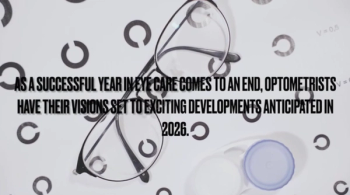
Inside the MOA of SYD-101, the potential first FDA-approved formulation of low-dose atropine
Paul Karpecki, OD, FAAO, sits down to discuss Sydnexis's atropine formulation and what an FDA approval would mean for myopia management.
The
One of the key differentiators of SYD-101 from traditionally compounded atropine is its stability. Atropine, as a molecule, tends to be unstable and acidic, which can lead to variability in compounded formulations. Research has shown significant inconsistencies in the concentration of compounded atropine, with variations depending on the manufacturer and the specific batch. These inconsistencies can impact the efficacy and safety of the treatment. In contrast, SYD-101 has been developed with a stabilized formulation to ensure consistency and effectiveness, which is a critical factor in gaining FDA approval.
The availability of an FDA-approved prescription atropine solution provides multiple advantages over compounded atropine. First, it allows for a standardized, reliable treatment option that parents can obtain through traditional pharmacy channels. Second, it opens the possibility of insurance coverage, which could make the treatment more accessible to a larger population. Given that myopia affects approximately 28 million children in the United States and carries long-term risks such as glaucoma and macular myopathy, the potential approval of SYD-101 represents a major advancement in myopia control.
In addition to its stability, the 0.01% formulation of SYD-101 is particularly noteworthy because it has been shown to be effective in slowing myopia progression while minimizing side effects. Higher concentrations of atropine, such as 0.05% or 0.5%, are associated with increased risks of visual disturbances, including glare and difficulty with near vision. The lower concentration in SYD-101 balances efficacy with a reduced likelihood of these adverse effects, making it a more tolerable option for pediatric patients.
The potential FDA approval of SYD-101 is an exciting development for eye care providers who are seeking reliable and standardized solutions for myopia management. By offering a prescription-based, stable, and effective treatment, this new therapeutic option has the potential to improve long-term visual outcomes for millions of children while addressing the significant challenges associated with compounded atropine. As the PDUFA date approaches, the optometry community will be watching closely, hopeful for the approval of this treatment.
Newsletter
Want more insights like this? Subscribe to Optometry Times and get clinical pearls and practice tips delivered straight to your inbox.













































.png)


